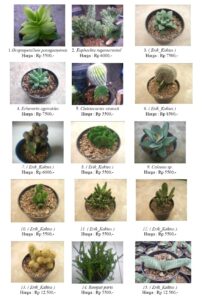Christmas cacti (Schlumbergera spp.) are beloved houseplants, renowned not just for their whimsical, pendulous foliage but also for their exuberant, jewel-toned blooms that materialize in the winter months. To facilitate this stunning floral display, it’s crucial to provide your Christmas cactus with the right type of fertilizer, ensuring it receives the necessary nutrients for optimal growth and blooming. Understanding what fertilizers to use and when can make all the difference in transforming your humble cactus into a veritable spectacle of color.
The Nutrient Spectrum: What Your Christmas Cactus Craves
When it comes to fertilizing Christmas cacti, one must pay attention to their specific nutrient requirements. These epiphytic plants are native to the lush rainforests of Brazil, where they thrive in a nutrient-dense, well-draining environment. As such, they have unique feeding needs compared to more conventional desert cacti. The primary nutrients to consider are nitrogen (N), phosphorus (P), and potassium (K) — often noted in the N-P-K ratio on fertilizer packages.
Nitrogen is vital for leaf and stem growth, pushing out lush, green foliage that serves as the plant’s photosynthetic powerhouse. Phosphorus is essential for flower development, promoting vibrant blooms and robust root systems. Lastly, potassium helps regulate various physiological functions, enhancing overall plant health and vigor. A balanced fertilizer or one specifically formulated for flowering plants will ensure your Christmas cactus receives an optimal blend of these nutrients.
For best results, choose a fertilizer with an N-P-K ratio of 20-20-20 or 10-10-10, suitable for the active growing period in spring and summer. Transitioning to a lower nitrogen formulation, such as a 5-10-10, during the bloom phase in late fall can maximally enhance blooming and fruiting potential.
Liquid vs. Granular: The Fertilizing Duel
The decision between liquid and granular fertilizers can be pivotal in your fertilization approach. Liquid fertilizers, often referred to as water-soluble options, offer rapid nutrient availability, delivering immediate nourishment as they are diluted in water and absorbed through the soil. This can be particularly beneficial during the active growing season when your cactus is eagerly producing new growth and buds.
Granular fertilizers, on the other hand, release nutrients more slowly compared to their liquid counterparts. As they break down over time, they provide a stable supply of nourishment. For gardeners seeking a hands-off approach or those who prefer not to fertilize frequently, granular options can be advantageous. These are best applied during the growing season and should be mixed into the top layer of soil to allow moisture penetration.
Regardless of the form chosen, it’s essential to follow the manufacturer’s recommended application rate. Over-fertilizing can lead to harmful salt buildup in the soil, which could jeopardize the health of your beloved cactus.
Timing is Everything: When to Fertilize for Maximum Bloom Potential
Understanding the seasonal rhythms of your Christmas cactus is paramount for effective fertilization. The plant experiences a distinctive growth cycle characterized by periods of dormancy and active growth. Fertilization should align with these cycles to ensure the plants derive maximum benefit from the nutrients provided.
The ideal time to begin fertilizing is in the early spring, as your plant starts to awaken from its winter slumber. This is when new growth is most apparent, and incorporating a balanced fertilizer can encourage vigorous development. Continuing to fertilize through summer will further promote leaf growth and prepare the cactus for the flowers it will produce later in the year.
As autumn’s chill sets in, you should gradually taper off fertilization. This signals the plant to shift its energy from growth to blooming. Allowing your Christmas cactus a rest period without added nutrients will help it conserve energy for its spectacular winter display.
It’s equally vital to avoid fertilizing during the blooming phase itself, as excessive nutrients can disrupt the delicate balance required for flowering, often leading to diminished bud development.
Organic Options: A Holistic Approach to Care
For the environmentally conscious gardener, organic fertilizers offer a sustainable alternative to synthetic options. These fertilizers are derived from natural sources such as compost, worm castings, or fish emulsion — promoting soil health and providing a well-balanced nutrient profile. While they may release nutrients more slowly than their chemical counterparts, the cumulative effects on soil ecology and plant health are profound.
One popular organic route is to utilize a diluted fish emulsion solution, rich in nitrogen and trace elements. It’s an ideal choice for the growing season, providing a natural boost to your Christmas cactus’s vigor.
Bone meal is another excellent organic option, particularly beneficial for its phosphorus content, encouraging robust blooms and healthy root development when mixed into the soil.
Organic methods not only bolster your cactus’s beauty but also contribute positively to environmental sustainability, fostering a more nurturing relationship with the earth.
Conclusion: Cultivating Joy through Proper Care
Successfully nurturing a Christmas cactus goes beyond just watering; it is an intricate dance that requires consideration of light, temperature, moisture, and nutrients. Choosing the appropriate fertilizer, understanding its application, and timing the feeding with the plant’s growth cycle are crucial components that enhance the aesthetic appeal of your home during the festive season. Ultimately, when provided with the right care, your Christmas cactus will reward you with spectacular blooms that evoke the warmth and joy of the holidays. For those dedicated to their cultivation, these plants serve not only as delightful housemates but as living testaments to the beauty of nature’s cycles.




Leave a Comment